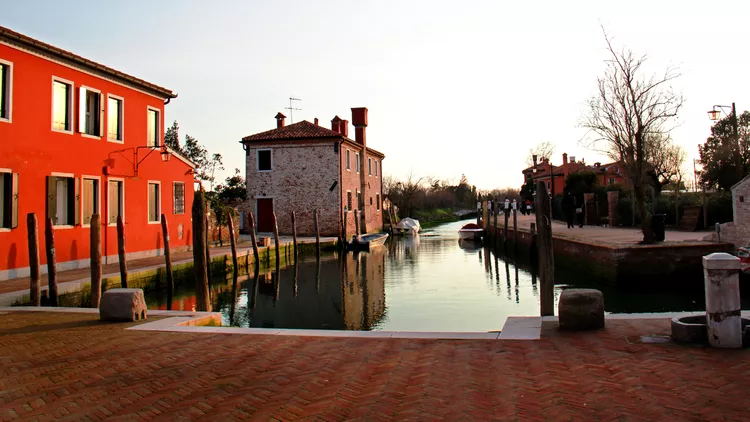Summary
Torcello is one of the most popular islands to visit in the Venice lagoon, yet it remains relatively peaceful. The main attraction is the spectacular Byzantine mosaics found in the seventh-century Cathedral of Santa Maria Dell’Assunta. Furthermore, much of the island is designated as a nature reserve, which is accessible exclusively via the walking paths.
Founded in the 5th century, Torcello predates Venice and was once a crucial island in ancient times, boasting a population that may have peaked at approximately 20,000. However, tragedy struck as malaria ravaged the population, leading to a significant decline. Consequently, many buildings were stripped of their materials, leaving little of its former glory in palaces, churches, and monasteries.
Mosaics in the Cathedral of Santa Maria Dell’Assunta
Torcello’s cathedral, built in 639, features a commanding 11th-century bell tower that dominates the skyline. Inside, visitors can admire the stunning Byzantine mosaics dating from the 11th to the 13th centuries; one of the most remarkable is the depiction of the Last Judgement. From the Vaporetto stop, the main path leads to the cathedral, which is less than a 10-minute walk away. The cathedral is open daily from 10:00 to 17:30, and there is an additional fee for climbing the bell tower.
Sights to See
Adjacent to the cathedral is the 11th-century Church of Santa Fosca (free entrance) surrounded by a five-sided portico in the shape of a Greek cross. Across from the cathedral, visitors will find the small Torcello Museum (closed on Mondays), located in 14th-century mansions that once served as the seat of government. This museum showcases medieval artifacts primarily from the island, as well as archaeological finds from the Paleolithic to the Roman period, uncovered in the Venice area. In the courtyard, you can see the imposing stone throne known as Attila’s Throne.
The Casa Museo Andrich is also worth a visit; it’s an artist’s house and museum exhibiting over 1,000 works of art. Additionally, it features an educational farm and garden with an observation point over the lagoon—an excellent spot for observing flamingos from March through September. Access to this venue is typically offered via guided tours.
There are also several short walking paths on the island, as well as the infamous Devil’s Bridge, or Ponte del Diavolo, notable for its lack of side railings.
Getting There
Torcello is easily reachable via a short boat ride from the island of Burano, using Vaporetto line 9, which operates between the two islands every half hour from 8:00 to 20:30. If you wish to visit both islands, it’s advisable to purchase an island transportation pass when departing from Fondamente Nove.
Where to Eat or Stay
For dining, visitors can enjoy lunch or arrange an overnight stay at the upscale and historic Locanda Cipriani—a unique accommodation option that allows guests to experience the island after day-trippers have departed. Notably, this is where Ernest Hemingway penned portions of his novel, Across the River and Through the Trees, in 1948, and the hotel has welcomed numerous illustrious guests over the years. Another recommended place for staying overnight is Bed and Breakfast Ca’ Torcello.
Here are some restaurants where guests can savor lunch on the island:
- Osteria al Ponte del Diavolo (closed Mondays) serves meals crafted from fresh, seasonal ingredients and offers outdoor seating in a lovely garden setting.
- Ristorante Villa ‘600 (closed Wednesdays) is set in a building that dates back to the 1600s, featuring an outdoor dining area amid beautiful surroundings.
- Ristorante al Trono di Attila (closed Mondays except in summer) also offers lunch options.





